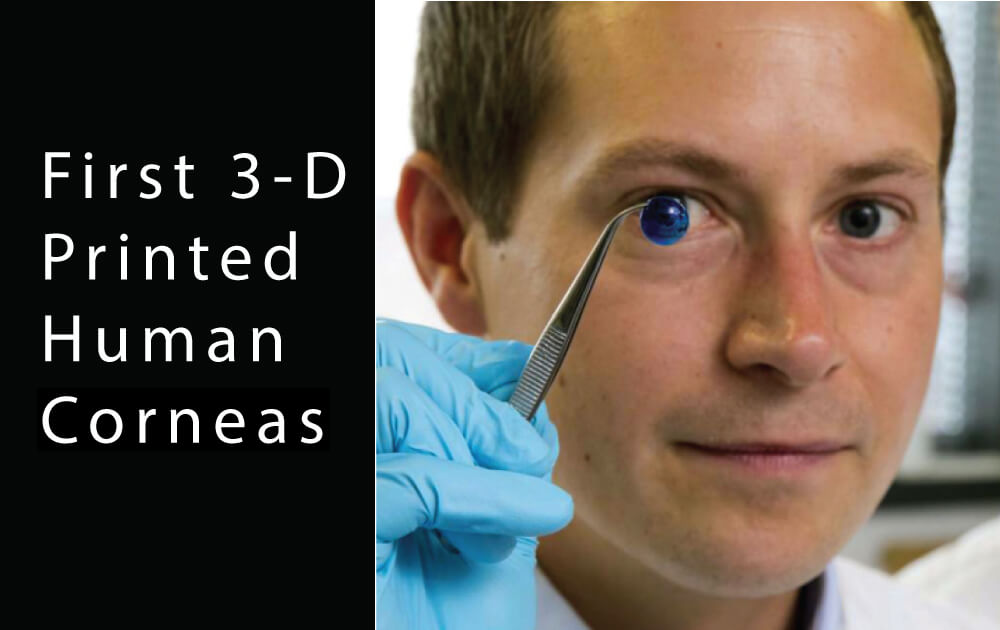Cornea, the outermost layer of the eye helps in focusing vision. The statistics show that there is a significant shortage of corneas for transplant with nearly 10 mil people worldwide requiring eye surgery to prevent corneal blindness due to trachoma and almost 5 mil people suffer total blindness due to corneal scarring caused by lacerations, abrasions, burns or diseases. To tackle this issue, scientists at Newcastle University, UK have created the first-ever human corneas. The proof of- concept research, published in Experimental Eye Research, reports how stem cells (human corneal stromal cells) from a healthy donor cornea were mixed together with alginate and collagen to create a solution that could be printed, a ‘bio-ink’. Then the bio-ink was successfully extruded in concentric circles to form the shape of a human cornea which took less than 10 minutes to print using a simple 3-D printer. The stem cells were then shown to culture or grow. The gel which is a combination of alginate and collagen keeps the stem cells alive while producing a material which is stiff enough to hold its shape but soft enough to be squeezed out of the nozzle of a 3-D printer. The uniqueness of the product is that a cornea could be built as per a patient’s specifications. The dimensions of the printed tissue were originally taken from an actual cornea. By scanning a patient’s eye, they could use the data to rapidly print a cornea which matched the size and shape. These 3-D printed corneas will now have to undergo further testing and it will be several years before we could be in the position where we are using them for transplants. However, an endeavor has been made to show that it is feasible to print corneas using coordinates taken from a patient’s eye and that this approach has the potential to combat the worldwide shortage of corneal transplants.
https://www.sciencedaily.com/releases/2018/05/180529223312.htm
Philips lighting research on eyesight

